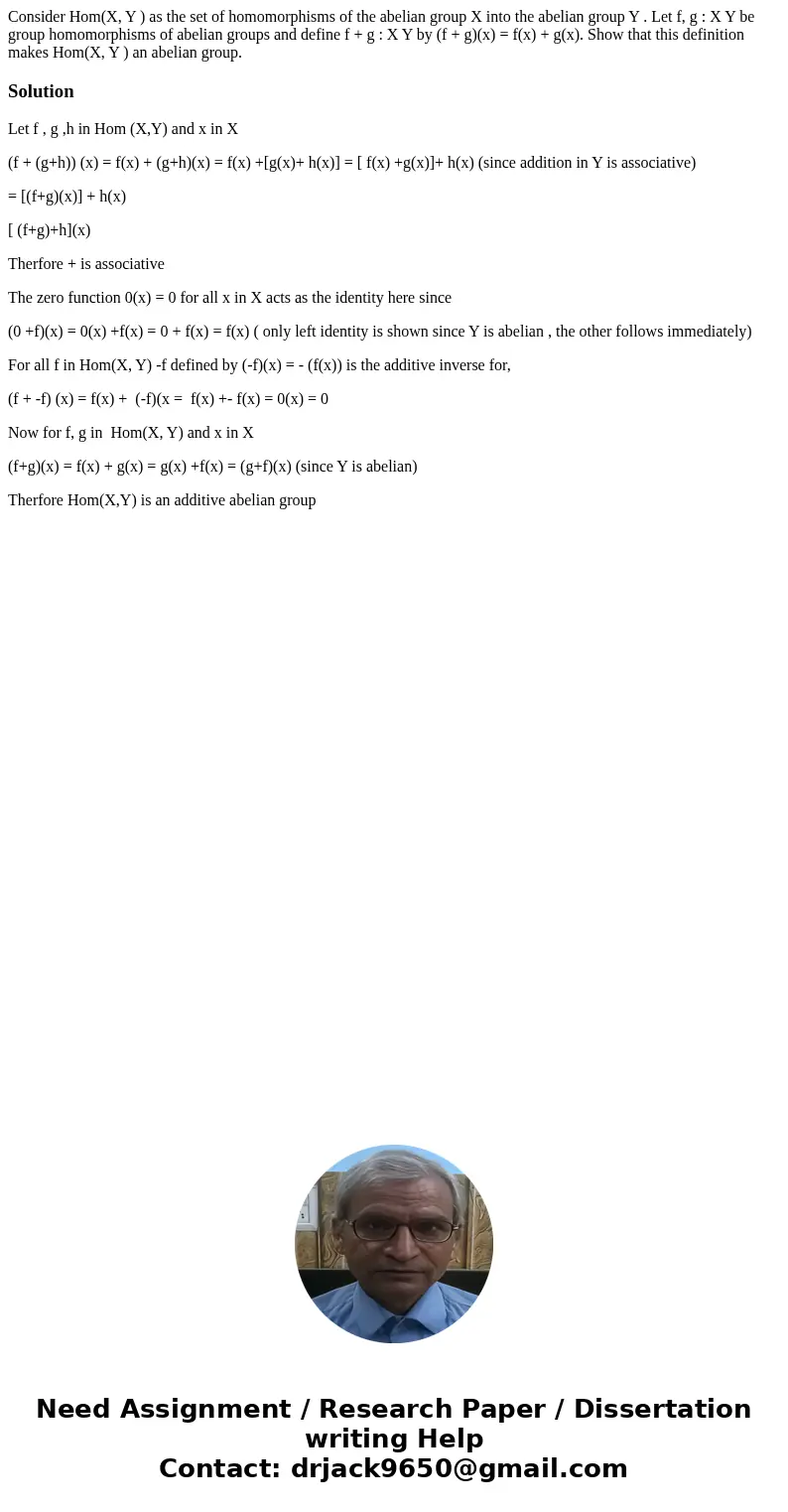Consider HomX Y as the set of homomorphisms of the abelian
Consider Hom(X, Y ) as the set of homomorphisms of the abelian group X into the abelian group Y . Let f, g : X Y be group homomorphisms of abelian groups and define f + g : X Y by (f + g)(x) = f(x) + g(x). Show that this definition makes Hom(X, Y ) an abelian group.
Solution
Let f , g ,h in Hom (X,Y) and x in X
(f + (g+h)) (x) = f(x) + (g+h)(x) = f(x) +[g(x)+ h(x)] = [ f(x) +g(x)]+ h(x) (since addition in Y is associative)
= [(f+g)(x)] + h(x)
[ (f+g)+h](x)
Therfore + is associative
The zero function 0(x) = 0 for all x in X acts as the identity here since
(0 +f)(x) = 0(x) +f(x) = 0 + f(x) = f(x) ( only left identity is shown since Y is abelian , the other follows immediately)
For all f in Hom(X, Y) -f defined by (-f)(x) = - (f(x)) is the additive inverse for,
(f + -f) (x) = f(x) + (-f)(x = f(x) +- f(x) = 0(x) = 0
Now for f, g in Hom(X, Y) and x in X
(f+g)(x) = f(x) + g(x) = g(x) +f(x) = (g+f)(x) (since Y is abelian)
Therfore Hom(X,Y) is an additive abelian group

 Homework Sourse
Homework Sourse